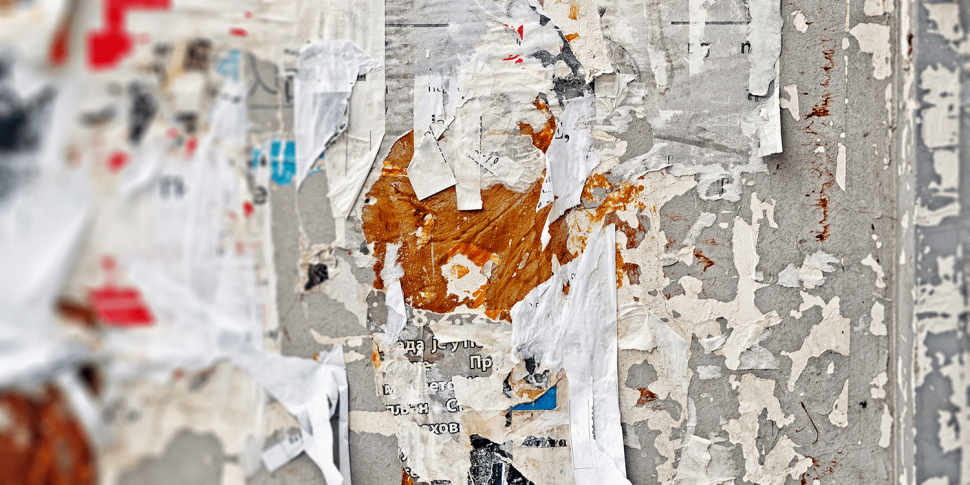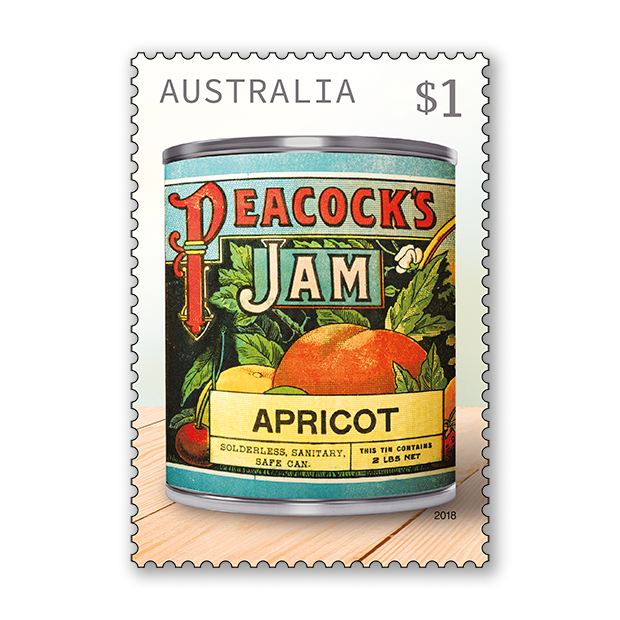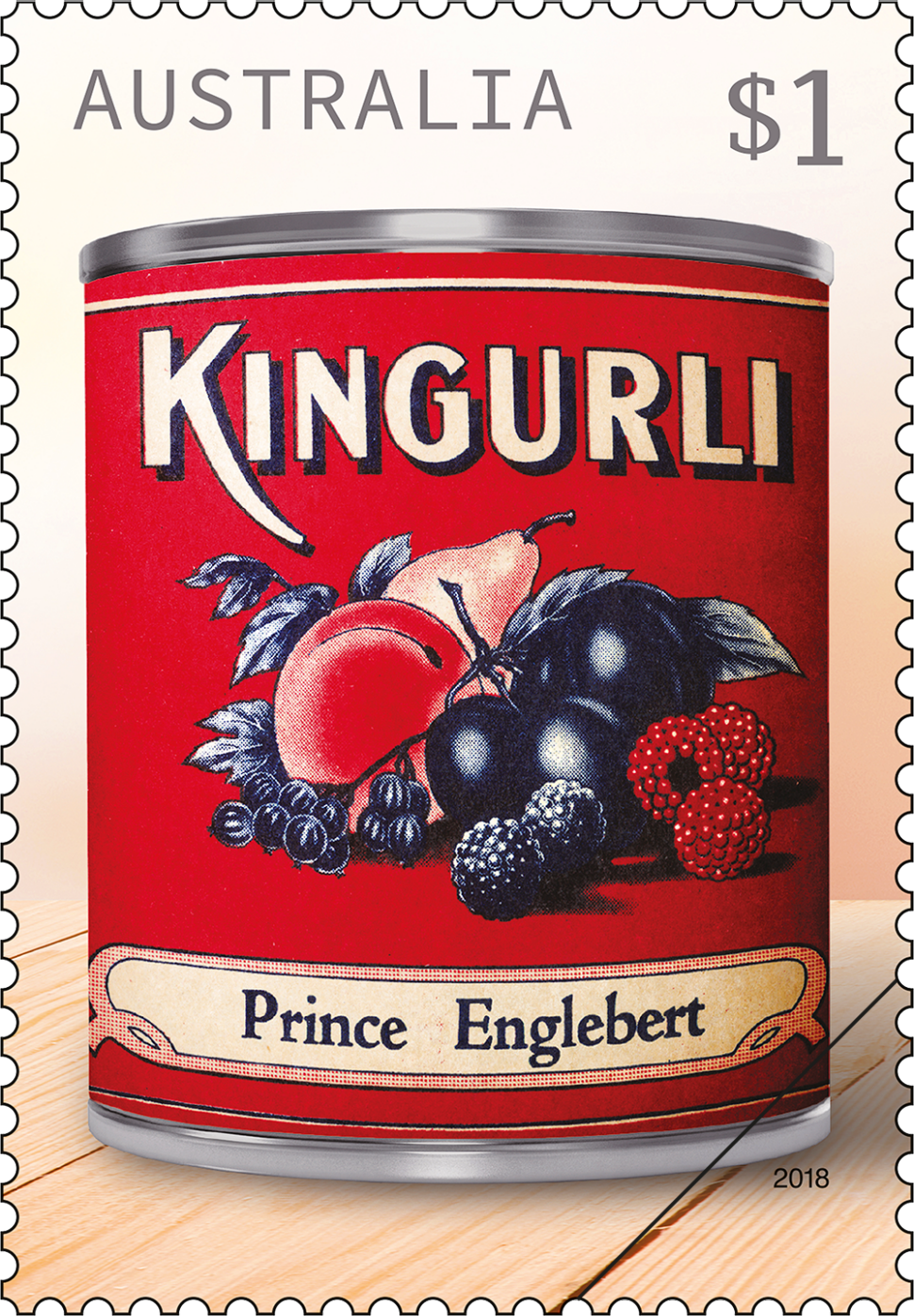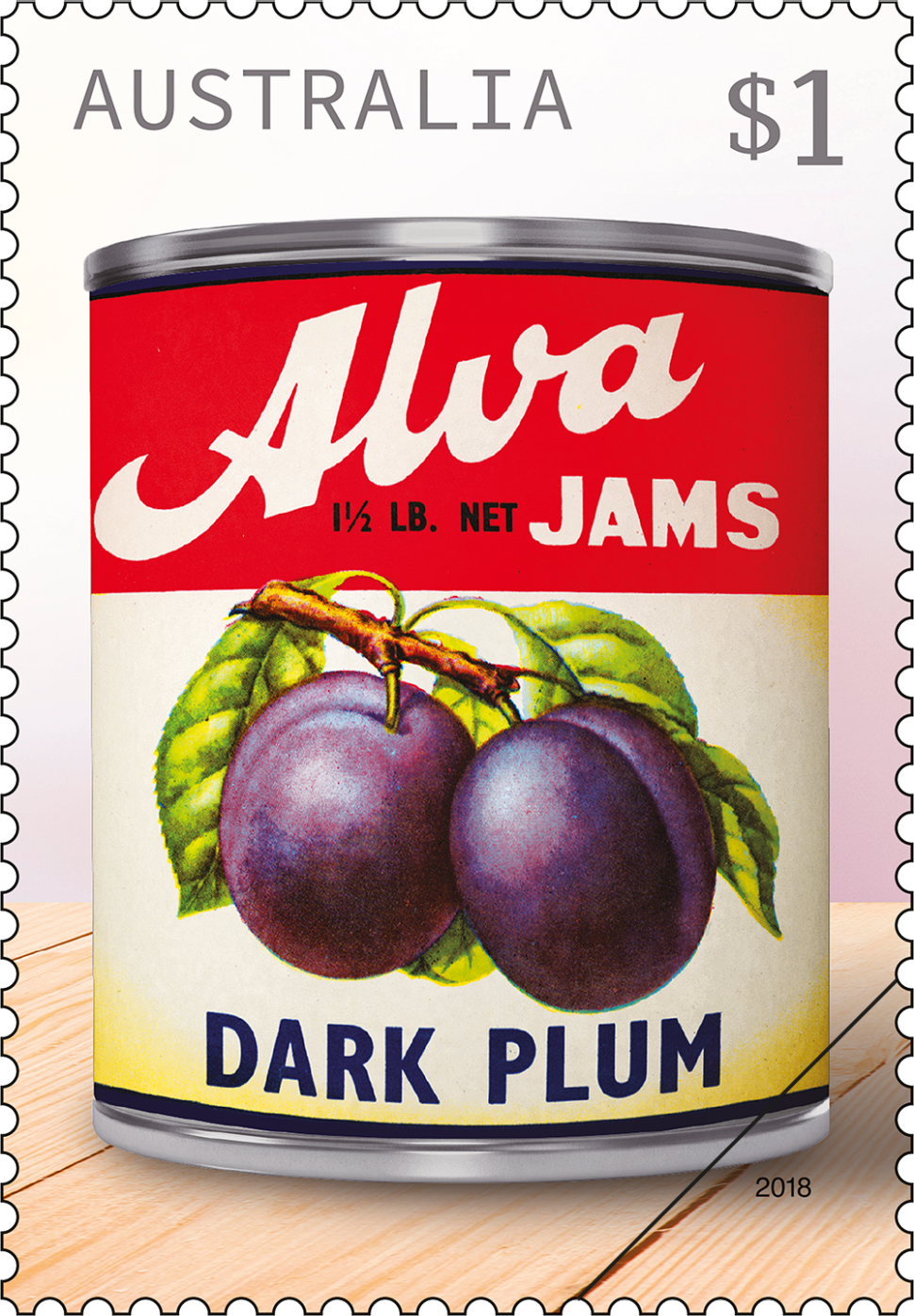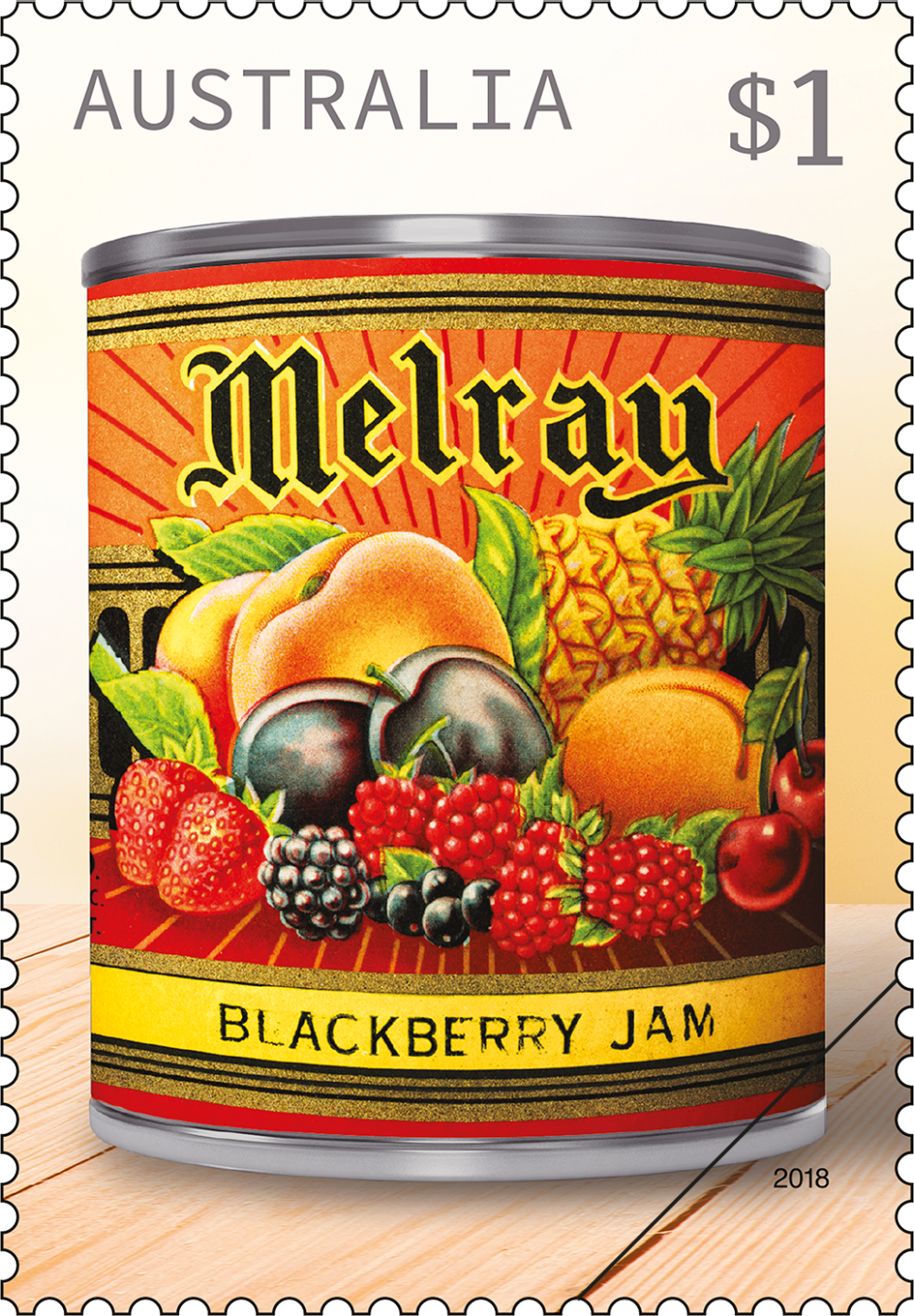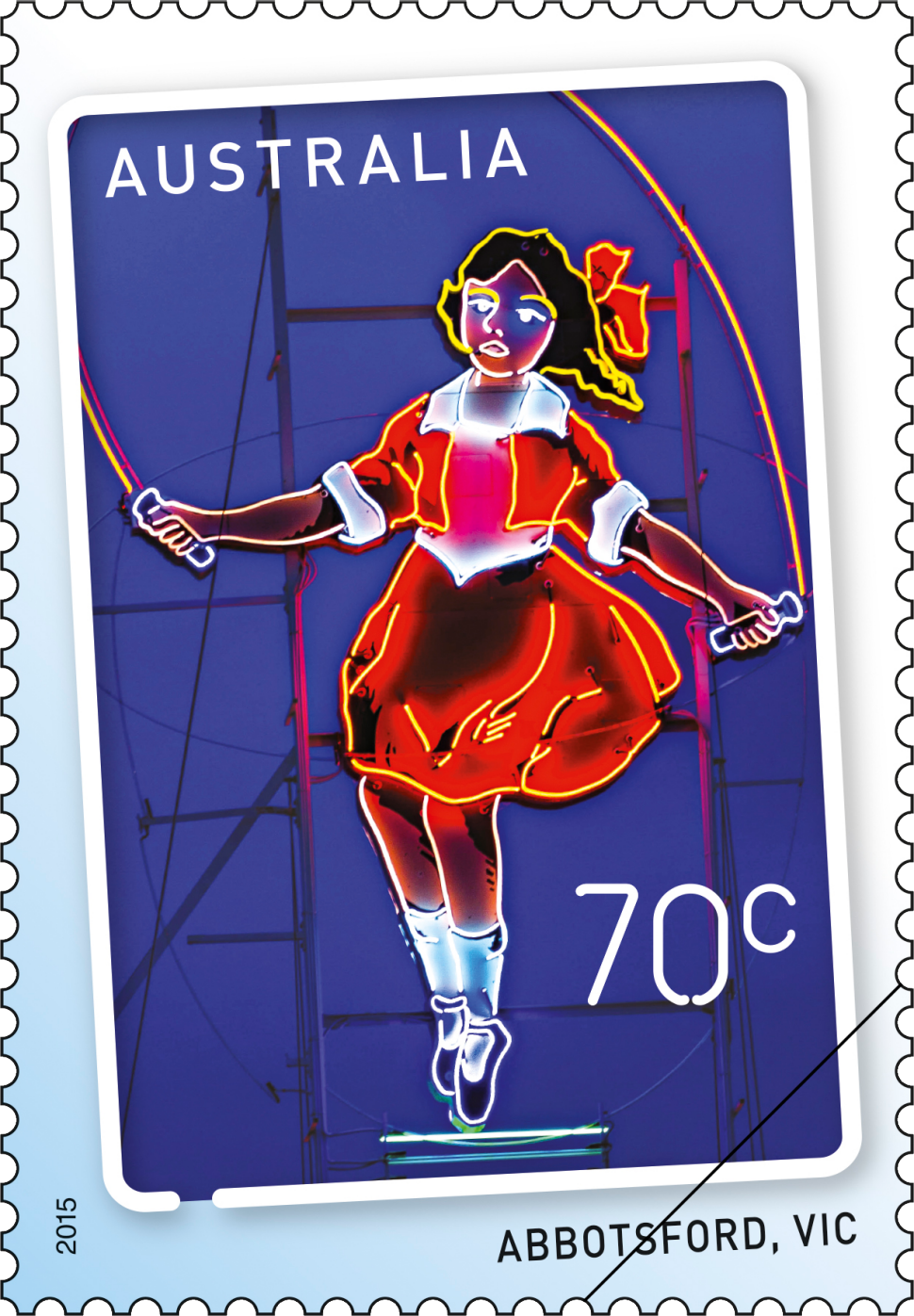Jam was one of the first locally manufactured foods in Australia. At the beginning of the 20th century, Australia’s primary production industries expanded at a great rate, leading Australia to become a major exporter of food, including fresh fruit, tinned fruit and tinned jam, particularly during the first quarter of the 20th century.
This stamp issue presents bright and cheerful paper labels that were pasted onto Australian jam tins from the late 19th century to the mid-20th century. Like the labels from fruit boxes, these labels are widely collected by ephemera enthusiasts.
The four labels shown in this stamp issue represent some of the key stages, locations and players in the story of Australian jam manufacturing. The stamp designs present each jam label wrapped around a tin and sitting on top of a wooden shelf, for maximum vintage appeal.
Products released in this issue
- First day cover (blank, gummed, self-adhesive)
- Stamp pack
- Maxicards
- Booklets of 10 x $1 (self-adhesive)
- Chequebook of 20 x 10 x $1 (self-adhesive)
- Booklet collection
Technical specifications
- Issue date
- 6 March 2018
- Issue withdrawal date
- 30 September 2018
- Denominations
- 4 x $1
- Stamp design
- Jo Mure, Australia Post Design Studio
- Product design
- Jo Mure, Australia Post Design Studio
- Printer
- RA Printing
- Paper - gummed
- Tullis Russell Red Phosphor
- Paper - self-adhesive
- Securepost MC 90
- Printing process
- Offset lithography
- Stamp size
- 26mm x 37.5mm
- Perforations
- 14.6 x 13.86
- Sheet layout
- Module of 50
- FDI postmark
- Hobar TAS 7000
- FDI withdrawal date
- 4 April 2018
Over in South Australia, George McEwin (1815–1885), a gardener and orchardist in Houghton, South Australia, founded a jam factory with his son in 1862, in order to make use of excess fruit. At the height of their business, they employed more than 100 people and purchased much of the fruit in the region. Their jam was marketed under many brand names, including Glen Ewin, Viking and Kingurli, which was well known for its plum jam. (Prince Englebert is a large purple plum.)
The business went into decline in the late 1980s and the factory closed in 1988. The orchard site, however, is still used for fruit growing today.
As well as the larger players, many small jam manufacturers also existed, dotted around the main food-producing states. Alva was a well-advertised brand during the 1940s, 50s and 60s, and the design of this label has a particularly retro feel.
The brand was established by W H Johnson's Jams Pty Ltd of Melbourne in 1933, but was taken over during the 1970s.
The beginning of commercial jam manufacturing in Australia, on a factory scale, begins in Tasmania, when George Peacock set up a factory in Hobart in 1861, before relocating to his iconic premises on the Hobart waterfront, in response to growing customer demand. He also expanded his business to Sydney, Melbourne, Brisbane and New Zealand.
Peacock shipped fresh fruit in from the Huon region in fishing boats. The fruit was both sieved and hand-sorted to remove stalks and the like. It was then steamed with sugar in copper kettles, hand-poured into hand-soldered cans and left to cool overnight.
Peacock’s factory is where Henry Jones (1862–1926), began work at age 12, pasting labels onto tins. “Jam Tin Jones” and partners went on to take over the business, upon George Peacock’s retirement, creating Henry Jones IXL (“I excel in everything I do”). The conglomerate became a significant Australian food processor and holding company, with business interests across Australia, as well as in London and South Africa.
As well as preserving companies, various grocery chains, buying groups and wholesale co-operatives sold jam under their own brand names. One such company was Melray. Melray, founded in East Prahran, Melbourne, in 1932, was the forerunner of the Foodland chain (1958). It had branches across the country. Their jam labels included special reward tokens for redemption in-store.
It is most likely that Melray jam was produced by Henry Jones’ Australasian Jam Company, or at least labelled at the iconic Jam Factory in South Yarra, Melbourne – a site of jam production in Australia for almost 100 years. Many Melray labels were discovered there, when the site was converted to a shopping centre in the 1970s, a period of industry-wide decline.
This content was produced at the time of the stamp issue release date and will not be updated.
